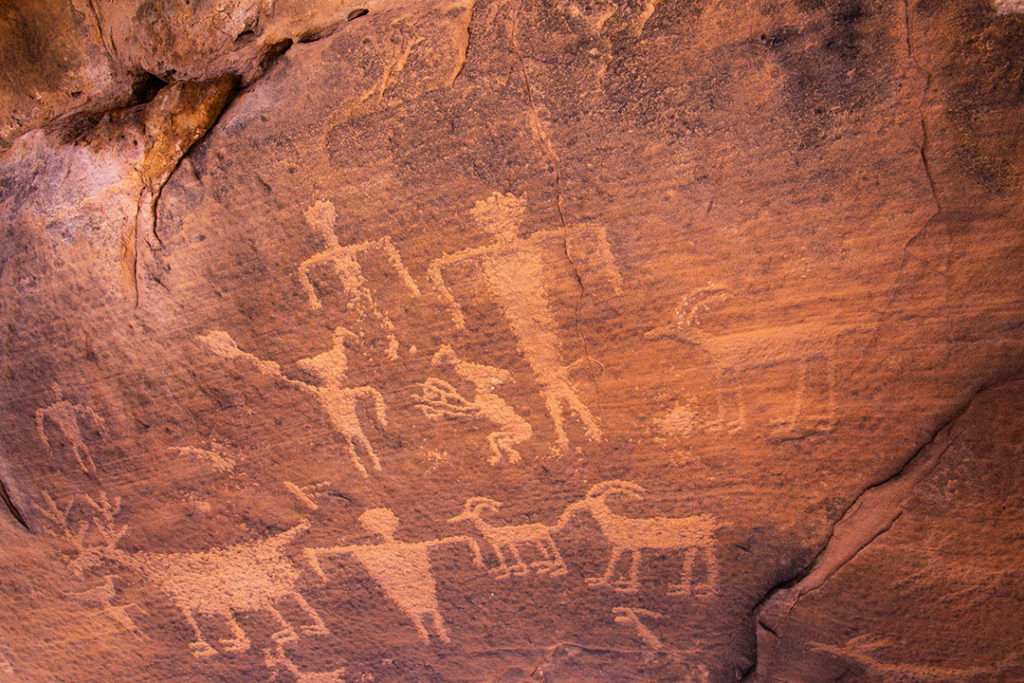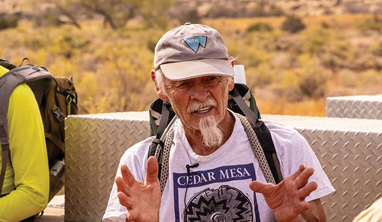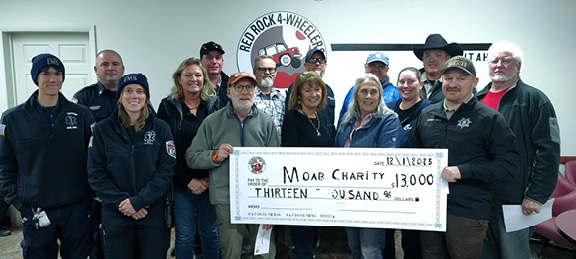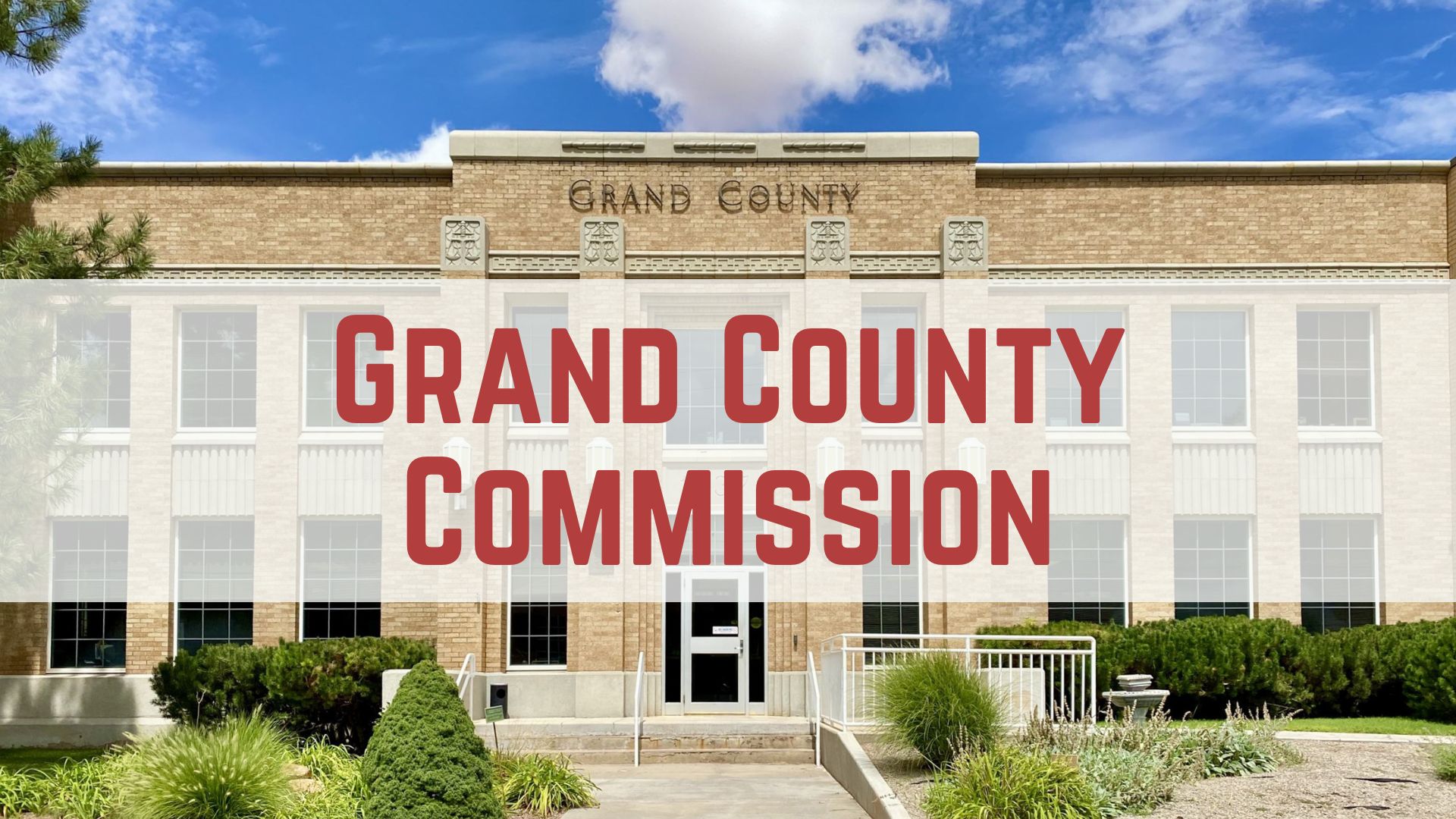Some information may be outdated.
Lawsuits are challenging the Bureau of Land Management (BLM).
The BLM must balance the interests of a wide range of public land users: ranchers, recreationists, conservationists and industry all have a claim on the agency’s mission. Stakeholders count on organizations representing their interests to keep an eye on the BLM’s operations. Recently in Utah, conservation watchdogs, including the Southern Utah Wilderness Alliance (SUWA), have been taking issue with some BLM actions, from vegetation removal in Green River to oil and gas sales in San Juan County.
“[Lawsuits are] just asking the agency to show their work, and to show the science, and to say, ‘We’re proposing this, and here’s why, and here’s how it’s going to accomplish that’ and then do some sort of follow up,” said Southern Utah Wilderness Alliance Wildlands Attorney Kya Marienfeld, who lives in Moab. The Southern Utah Wilderness Alliance (SUWA) is a nonprofit dedicated to environmental conversation and preservation in Utah.
Marienfeld’s comment was in reference to a BLM vegetation removal project planned for the Tavaputs Plateau, an area north of Green River, this year.
The project proposed the removal of “encroaching” pinyon and juniper trees through the common technique of mastication, in which heavy machinery pulls the trees from the ground, chips them and re-scatters the chips over the cleared area. The BLM project summary says the work will “promote resilience to primary sage grouse habitat.” The environmental assessment (EA) for the project also mentions improved habitat for mule deer and elk, as well as a reduced risk of high intensity wildfires.
A new tool has come out to help federal land managers in making decisions about sagebrush habitat. Representatives of the BLM, the U.S. Forest Service Rocky Mountain Research Station, the U.S. Geological Survey and the U.S. Fish and Wildlife Service collaborated to create a research-based guide called The Science Framework for Conservation and Restoration of the Sagebrush Biome, which was published this spring. The Framework includes references to scientific studies and policy guidance.
Of the 4,048 acres to be treated in the Tavaputs project, over 2,500 acres were within Wilderness Study Area (WSA) boundaries in Desolation Canyon and Jack Canyon.
WSAs are identified as having wilderness-quality characteristics, and must be managed in a way that maintains that quality. SUWA filed a lawsuit against the BLM in the central division of the Utah Federal District Court, stating in a May 14 press release that the project “violated the Federal Land Policy and Management Act (FLPMA) and the agency’s legal obligation not to ‘impair’ wilderness suitability in WSAs.”
Marienfeld said there is no substantial evidence that treatments like these significantly benefit the greater sage grouse, a western species of bird that has been considered for threatened or endangered conservation status but remains unlisted. She cited a report from the Salt Lake City-based nonprofit Wild Utah Project, which reviewed the available scientific literature on the effects vegetation removal projects like these.
The report’s summary of results notes,“Of the five studies of pinyon-juniper treatments, three showed positive effects and two showed non-significant effects [on greater sage grouse.]” The report also notes that many post-treatment studies are conducted a fairly short time after projects are completed, and data on longterm effects is lacking.
The EA for the Tavaputs Project says, “Follow up maintenance of treated areas will be done on an as-needed basis and as funding and timing allow.”
“It’s really easy for the agency to claim that they’re doing something for one reason, especially when there’s no follow up, no oversight, from really anywhere, about whether or not they work for what they’re claiming they work for,” Marienfeld said.
On May 10, the BLM remanded their approval of what was to be phase two of the project, which encompassed the acres within the WSA boundaries, before the lawsuit began. SUWA is still working to appeal a similar project slated to take place in Grand Staircase-Escalante National Monument.
“We find these all over the state,” Marienfeld said.
On another front, SUWA filed a federal lawsuit in the United States District Court in Utah against the BLM over the sale 54,508 acres of land leases for oil and gas development in San Juan County in March and December of 2018. Various groups expressed their objections to the sales during the public comment periods, including SUWA, the National Park Service, and Native American groups including the All Pueblo Council of Governors, Pueblo of Acoma and the Hopi Tribe.
Kate Cannon, the superintendent of the Southeast Utah Group of National Parks, said in a 2017 letter to the BLM regarding the March 2018 sales, “The parcels that will be offered for lease have the potential to affect resources such as air quality, dark night sky, scenic value, soundscapes and groundwater quality important to all the parks in the Southeast Utah Group,” and she emphasized particular concern for Hovenweep National Monument, which is closest to the leased parcels.
In their formal protest of 19 parcels offered in the December 2018 sale, dated November of 2018, the Pueblo of Acoma wrote, “On the whole, Acoma disputes BLM’s contention that conservation of these outstanding resources is compatible with expanded industrialization of this cultural landscape. A hurried sale risks causing cumulative harm to one of America’s most treasured landscapes and harm to our cultural resources, and ongoing cultural practices.”
The BLM does analyses of the parcels to be leased for oil and gas development at several steps in the process. Suitability is considered in a Resource Management Plan (RMP), which each district updates every 10 to 20 years. An EA is conducted for each parcel to be auctioned for lease, and another analysis is performed before any exploration (groundbreaking) action is undertaken by a leasee. Until January of 2018, another layer of consideration was included in the process. A Master Leasing Plan (MLP) was created as a sub-plan of the RMP. In response to the current administration’s Executive Order 13783 of 2017, which prioritizes national energy independence and charges public lands managers to streamline pathways to energy development, the BLM “determined that Master Leasing Plans (MLPs) have created duplicative layers of NEPA review,” and eliminated that step in the process.
The U.S. Government Accountability Office (GAO) is a nonpartisan watchdog agency that serves Congress and examines how taxpayer dollars are spent. Over the years, the GAO has looked into the BLM’s handling of oil and gas development on public land leases and reported to Congress that the agency has room for improvement. In a 2017 report, the GAO found that BLM inspections were not effectively enforcing environmental policies.
“The Bureau of Land Management requires oil and gas companies on federal lands to use the Bureau’s best environmental management practices,” the report says. “The Bureau also inspects oil and gas wells to verify that the practices are in use and assess how well they actually protect the environment. However, the Bureau cannot be sure that these practices are in place and working well because its field offices document inspections and use data inconsistently.”
More recently in February, the GAO issued a report reviewing the BLM’s inspection program over the 140,000 private companies operating oil and gas wells on federal and Native American lands. The GAO checked for inspection compliance with “laws and regulations that protect public safety and environment.” The results found that between 2012-16, the six busiest BLM offices were tasked with handling more than half the agency’s entire workload, but had only 44% inspection staff.
On May 16, several environmental groups, including Living Rivers, Grand Canyon Trust, and Utah Physicians for a Healthy Environment, filed a lawsuit in United States District Court against the BLM for granting a right-of-way across public lands in the Uinta Basin of northeast Utah to an Estonian-owned oil company called Enefit American Oil LLC.
The right-of-way will allow the company to construct 19 miles of water lines, 8.8 miles of natural gas lines, and 11.2 miles of oil product lines, as well as 5.7 miles of road improvement and 30 miles of power lines. This infrastructure would support up to 9,000 acres for commercial oil shale mining operation, all on private land, which is projected to produce 50,000 barrels of oil per day for up to 30 years.
Litigating groups say the BLM failed to consider the environmental impacts of the proposed operation when it assessed the impacts of the right-of-ways. A May 16 press release from The Grand Canyon Trust says the oil production process would drain more than 10,000-feet annually from the Green River, harm critical habitat for endangered fish, and reduce air quality. It also states that “Oil shale is one of world’s most carbon-polluting fuels, with life-cycle carbon emissions up to 75% higher than those of conventional fuels.”
The BLM does not generally comment on ongoing litigation, and declined to make a statement regarding these right-of-ways.
Environmental and conservation groups scrutinize Bureau of Land Management programs and policies
“It’s just asking the agency to show their work.”
Appreciate the coverage? Help keep local news alive.
Chip in to support the Moab Sun News.





